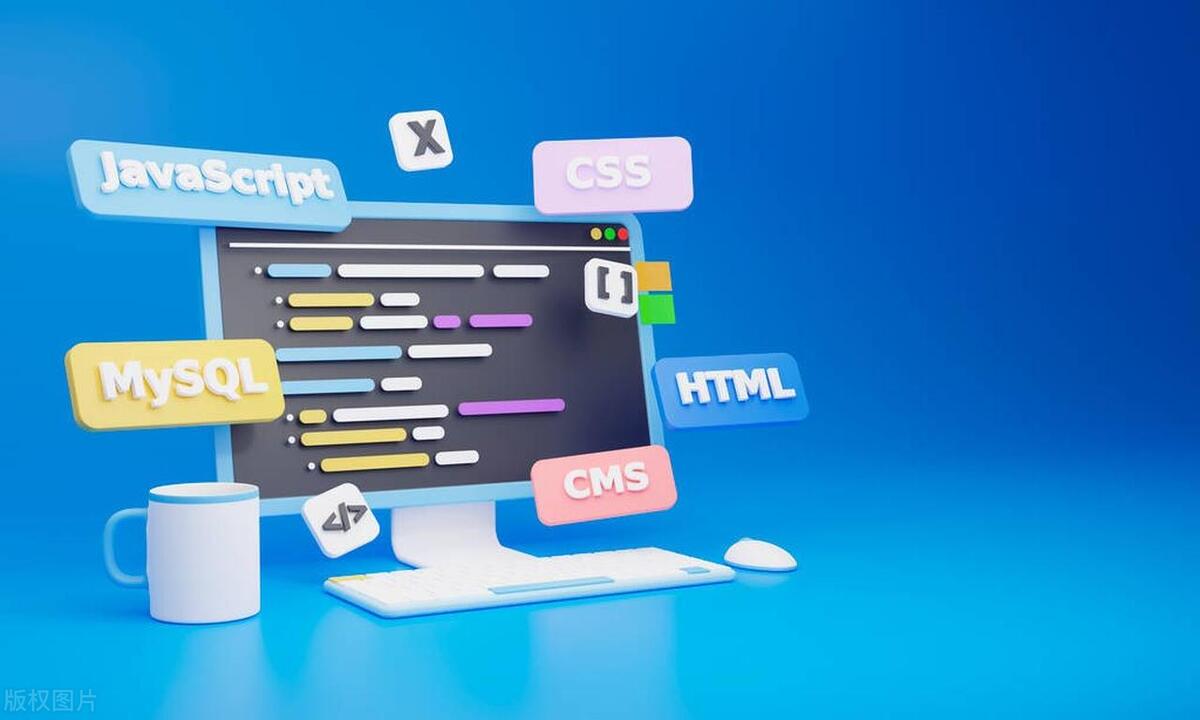mix-blend-mode is an attribute in CSS that controls the way elements and background content are mixed. It allows web page elements such as text, images, etc. to produce a mixed effect similar to Photoshop layer. 1. Common values ??include normal, multiply, screen, overlay, etc.; 2. Suitable for scenes such as text and background fusion, multi-layer overlay, dynamic interaction design, etc.; 3. Pay attention to background dependence, browser compatibility, performance impact and readability issues when using it; 4. Beginners can start by setting background pictures, adding text or color blocks, and trying different blending modes.

The mix-blend-mode property of CSS brings visual effects similar to Photoshop layer mixing to web design. It allows different elements to overlay on the page to produce rich color fusion and interaction effects, especially suitable for creative combinations of backgrounds, texts and images.

What is mix-blend-mode ?
Simply put, mix-blend-mode controls how an element is mixed with the content behind it. It behaves similarly to the layer blending mode in image editing software. For example, you can "fusion" a picture with the text below, or let two color blocks overlap to create new color levels.

The usage method is also simple, just set it in CSS:
.element {
mix-blend-mode: multiply;
} Common supported values ??include: normal , multiply , screen , overlay , darken , lighten , etc.

Which scenarios are suitable for mix-blend-mode ?
This property is most commonly used in the following situations:
- Fusion of text and background : For example, add a paragraph of text to the picture and set
mix-blend-modeof the text to naturally combine it with the background. - Multi-layer overlay effect : When multiple elements overlap, different blending modes can be used to create visual impact.
- Dynamic interaction design : Use scrolling, hovering and other actions to achieve dynamically changing visual effects.
For example, if you want the text to be more prominent in the picture but not appear stiff, you can write it like this:
.text {
mix-blend-mode: difference;
color: white;
}In this way, the text will automatically adjust the display effect according to the background color, and sometimes it can even form a visual style like a negative film.
What should you pay attention to when using it?
While mix-blend-mode is cool, there are several details that cannot be ignored:
- It only works for areas with background content . If the element is followed by a blank (such as body without background), then there is no mixing effect.
- The support of different browsers is slightly different, and it is recommended to add
-webkit-prefix, especially when testing on mobile. - Blending mode affects page performance, especially when a large number of elements are used simultaneously. Try to control quantity and hierarchy.
- Text mixing can affect readability, be careful to test contrast.
Therefore, it is best to try it in a small range before using it to ensure that the visual effect is both beautiful and does not affect the user experience.
How to start trying?
If you are new to this property, you can start with the following steps:
- Find a background image or set a gradient background
- Put a text or translucent color block on it
- Try different
mix-blend-modevalues ??and observe the changes between them
For example, a set of structures:
<div class="background"></div> <h1 class="blend-text">Hello</h1>
Then set the background to .background and add the blend mode to .blend-text to see the effect.
Basically all that. Although it is simple to write, it is quite interesting to play.
The above is the detailed content of Exploring Visual Compositing with CSS mix-blend-mode. For more information, please follow other related articles on the PHP Chinese website!

Hot AI Tools

Undress AI Tool
Undress images for free

Undresser.AI Undress
AI-powered app for creating realistic nude photos

AI Clothes Remover
Online AI tool for removing clothes from photos.

Clothoff.io
AI clothes remover

Video Face Swap
Swap faces in any video effortlessly with our completely free AI face swap tool!

Hot Article

Hot Tools

Notepad++7.3.1
Easy-to-use and free code editor

SublimeText3 Chinese version
Chinese version, very easy to use

Zend Studio 13.0.1
Powerful PHP integrated development environment

Dreamweaver CS6
Visual web development tools

SublimeText3 Mac version
God-level code editing software (SublimeText3)

Hot Topics
 What is the role of (formerly PortalVue) in Vue 3 for rendering content outside the current component's DOM hierarchy?
Jun 11, 2025 am 12:09 AM
What is the role of (formerly PortalVue) in Vue 3 for rendering content outside the current component's DOM hierarchy?
Jun 11, 2025 am 12:09 AM
Vue3 is used to render content outside the current component DOM structure. 1. It allows you to move elements such as modal boxes, prompt tools to other locations on the page to solve layout problems, z-index hierarchy and accessibility problems; 2. When using it, you need to wrap the target content and specify the target selector, such as; 3. Vue will physically move the corresponding DOM node to the specified position while maintaining responsiveness and event logic; 4. Common application scenarios include modal boxes, notification messages, tooltips and barrier-free content; 5. When using it, you need to ensure that the target element already exists, and pay attention to the style scope and dynamic logic processing. In short, maintaining the logical relationship of component tree through virtual references provides a concise solution for complex UIs.
 What are some strategies for managing CSS and styling at scale in a large Vue project?
Jun 10, 2025 am 12:10 AM
What are some strategies for managing CSS and styling at scale in a large Vue project?
Jun 10, 2025 am 12:10 AM
TomanageCSSandstylinginlargeVueprojectseffectively,adoptscopedstylesbydefault,establishaglobalCSSarchitecture,useconsistentnamingconventions,selectivelyleverageCSS-in-JSorutilitylibraries,enforceconsistencywithlinters,anddocumentdesigntokens.Beginwit
 How can CSS be used to implement dark mode theming on a website?
Jun 19, 2025 am 12:51 AM
How can CSS be used to implement dark mode theming on a website?
Jun 19, 2025 am 12:51 AM
ToimplementdarkmodeinCSSeffectively,useCSSvariablesforthemecolors,detectsystempreferenceswithprefers-color-scheme,addamanualtogglebutton,andhandleimagesandbackgroundsthoughtfully.1.DefineCSSvariablesforlightanddarkthemestomanagecolorsefficiently.2.Us
 What are some common techniques for vertically centering content using CSS?
Jun 12, 2025 am 10:27 AM
What are some common techniques for vertically centering content using CSS?
Jun 12, 2025 am 10:27 AM
Vertical centering content can be implemented in CSS in a variety of ways, the most direct way is to use Flexbox. 1. Use Flexbox: By setting the container to display:flex and in conjunction with align-items:center, vertical centering of child elements can be easily achieved; 2. Combination of absolute positioning and transform: suitable for absolute positioning elements, by setting top and left to 50% and then using translate (-50%,-50%) to achieve centering; 3. CSSGrid: Through display:grid and place-items:center, horizontal and vertical centering can be achieved at the same time. If only vertical centering is required, use align
 Can you explain the difference between em, rem, px, and viewport units (vh, vw)?
Jun 19, 2025 am 12:51 AM
Can you explain the difference between em, rem, px, and viewport units (vh, vw)?
Jun 19, 2025 am 12:51 AM
The topic differencebetweenem, Rem, PX, andViewportunits (VH, VW) LiesintheirreFerencepoint: PXISFixedandbasedonpixelvalues, emissrelative EtothefontsizeFheelementoritsparent, Remisrelelatotherootfontsize, AndVH/VwarebaseDontheviewporttimensions.1.PXoffersprecis
 How does in Vue 3 help manage asynchronous components and their loading states?
Jun 10, 2025 am 12:07 AM
How does in Vue 3 help manage asynchronous components and their loading states?
Jun 10, 2025 am 12:07 AM
SuspenseinVue3simplifieshandlingasynccomponentsbymanagingloadingstatesandintegratingerrorhandling.1.Itwrapsasynccontentanddisplaysfallbackcontentlikespinnersuntilthecomponentloads.2.YoudefineasynccomponentsusingdefineAsyncComponentandwraptheminaSuspe
 What are slots (default, named, scoped) in Vue, and how do they enable flexible component composition?
Jun 10, 2025 am 12:08 AM
What are slots (default, named, scoped) in Vue, and how do they enable flexible component composition?
Jun 10, 2025 am 12:08 AM
InVue,slotsareessentialforbuildingreusableandflexiblecomponents,andtherearethreemaintypes:default,named,andscoped.Defaultslotsallowaparenttopasscontentintoachildcomponentwithnospecificplacement,idealforsingle-sectioncomponentslikecards.Namedslotsenab
 How does Vue's error handling mechanism (e.g., errorCaptured hook, app.config.errorHandler) work?
Jun 10, 2025 am 12:12 AM
How does Vue's error handling mechanism (e.g., errorCaptured hook, app.config.errorHandler) work?
Jun 10, 2025 am 12:12 AM
Vue provides errorCaptured hooks and global error handlers to deal with application errors. 1. The errorCaptured hook can capture JavaScript errors in the child component tree, including errors in the life cycle hook and rendering function, receive error objects, error components and error location information, and can prevent errors from bubble upward by returning false. 2. Global error handling is configured through app.config.errorHandler, which is used to capture unexpected errors in the entire application, receive error objects, component instances and error type information. It is suitable for rendering functions, life cycle hooks, watcher callbacks and other scenarios, but does not automatically capture errors in event processing or asynchronous operations. 3.






